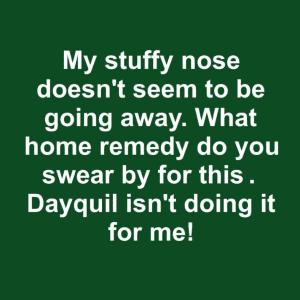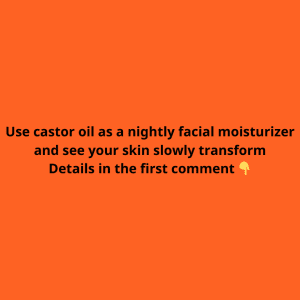Noticing small white bumps on your skin, particularly on your nose, can be frustrating. These tiny, stubborn marks might not respond to traditional acne treatments, leaving you wondering what they are and how to get rid of them. More often than not, these little bumps are a skin condition known as milia. Though usually harmless, understanding their nature and the best treatment methods can be crucial for managing them effectively.
What Are These Little White Bumps?

The small white or yellowish bumps you’re noticing are likely milia, which are keratin-filled cysts that develop under the skin. Unlike regular acne, milia don’t have an opening, meaning the trapped keratin can’t be easily extracted or treated with typical acne medications. These bumps are most commonly found on the face, especially around the nose, cheeks, and eyes, though they can appear anywhere on the body.
Milia are not dangerous and are generally a cosmetic issue rather than a medical one. However, they can be persistent and annoying, which makes knowing how to manage them effectively a key step in maintaining clear skin.
Should I Be Worried About Milia?
Milia are typically nothing to worry about, but there are a few factors to consider:
1. Benign Nature
The good news is that milia are benign. They are non-cancerous and don’t lead to any serious health issues. In most cases, they don’t cause pain or discomfort, making them more of an aesthetic concern than a medical one.
2. Persistence
While milia may be harmless, they can be quite persistent. Without treatment, they can stay on your skin for months or even longer. If you’re someone who values smooth, clear skin, you’ll likely want to take steps to remove them sooner rather than later.
3. Underlying Conditions
In rare instances, milia can be a symptom of underlying health problems, especially if they appear suddenly and in large numbers. For example, they might be linked to skin trauma, burns, or other medical conditions. If you’re concerned or if the bumps are accompanied by redness, swelling, or pain, it’s best to consult a dermatologist.
How to Remove Milia Effectively
Fortunately, there are several safe and effective ways to remove milia, ranging from professional treatments to at-home remedies.
1. Professional Extraction
One of the most reliable methods to remove milia is professional extraction performed by a dermatologist or licensed skincare professional. They have the right tools and expertise to remove the cysts without causing infection, scarring, or further irritation. While it may be tempting to pick at the bumps yourself, doing so can make the problem worse and may leave lasting marks.
2. Prescription Retinoids
Topical retinoids, such as tretinoin, can be prescribed by a dermatologist to speed up the exfoliation process. Retinoids encourage skin cell turnover, which helps clear up milia by allowing the trapped keratin to surface naturally. However, retinoid creams can be strong, so it’s important to consult a healthcare professional before using them, especially if you have sensitive skin.

3. Over-the-Counter Exfoliants
Mild chemical exfoliants, such as those containing alpha hydroxy acids (AHAs) or beta hydroxy acids (BHAs), are also effective in managing milia. These exfoliants help to remove dead skin cells and promote new skin growth, making it easier for milia to disappear. Look for products with glycolic acid, salicylic acid, or lactic acid for the best results, and apply them consistently to see improvements over time.
4. Gentle Home Remedies
While professional treatments are more reliable, some people prefer to try home remedies. For example, steaming your face can open your pores, making it easier to remove trapped debris. Gentle exfoliation using a facial scrub can also help, but these methods should be done with caution. Over-exfoliating or being too aggressive can irritate the skin and worsen the condition.
5. Avoid Heavy Skincare Products
If you’re prone to milia, it’s essential to avoid heavy creams and oily skincare products that can clog pores. Look for non-comedogenic (won’t clog pores) formulas when choosing moisturizers, sunscreens, and makeup. Switching to lighter, oil-free skincare products can help reduce the likelihood of developing new milia.
Why Do Milia Form?
Milia can appear for a variety of reasons, but some common causes include:
- Sun Damage: Sunburns or long-term sun exposure can damage your skin and increase the likelihood of developing milia.
- Heavy Skincare Products: Oily or thick creams can clog pores, trapping keratin beneath the skin’s surface.
- Lack of Exfoliation: When dead skin cells aren’t shed properly, they can accumulate and lead to milia.
- Skin Trauma: If your skin has experienced burns, blisters, or other forms of trauma, it may be more prone to developing milia as it heals.

Preventing Milia from Reappearing
Although milia are not always preventable, taking care of your skin can reduce the chances of them forming again.
1. Consistent Exfoliation
Incorporate mild exfoliants into your skincare routine to help shed dead skin cells regularly. Products with AHAs, BHAs, or enzymes can help prevent keratin buildup that leads to milia formation.
2. Use Sunscreen
Sun damage can aggravate or contribute to the development of milia. Protect your skin by applying a broad-spectrum sunscreen with SPF 30 or higher daily, even on cloudy days.
3. Choose the Right Skincare Products
Avoid heavy creams and stick to non-comedogenic, lightweight products to keep your pores clear. This can help prevent new milia from developing.
4. See a Dermatologist Regularly
If you’re prone to recurrent milia or have concerns about your skin, regular visits to a dermatologist can help. They can recommend the best treatments and offer advice tailored to your skin’s needs.
Conclusion: Milia Are Manageable with the Right Approach
While the small white bumps on your skin may be bothersome, they are generally harmless and easily treatable. Understanding that these bumps are likely milia—keratin-filled cysts—can help guide you in choosing the best treatment. Whether you opt for professional extraction, prescription retinoids, or over-the-counter exfoliants, there are plenty of solutions to clear up your skin. With the right skincare routine and a little patience, you can say goodbye to those pesky bumps.


